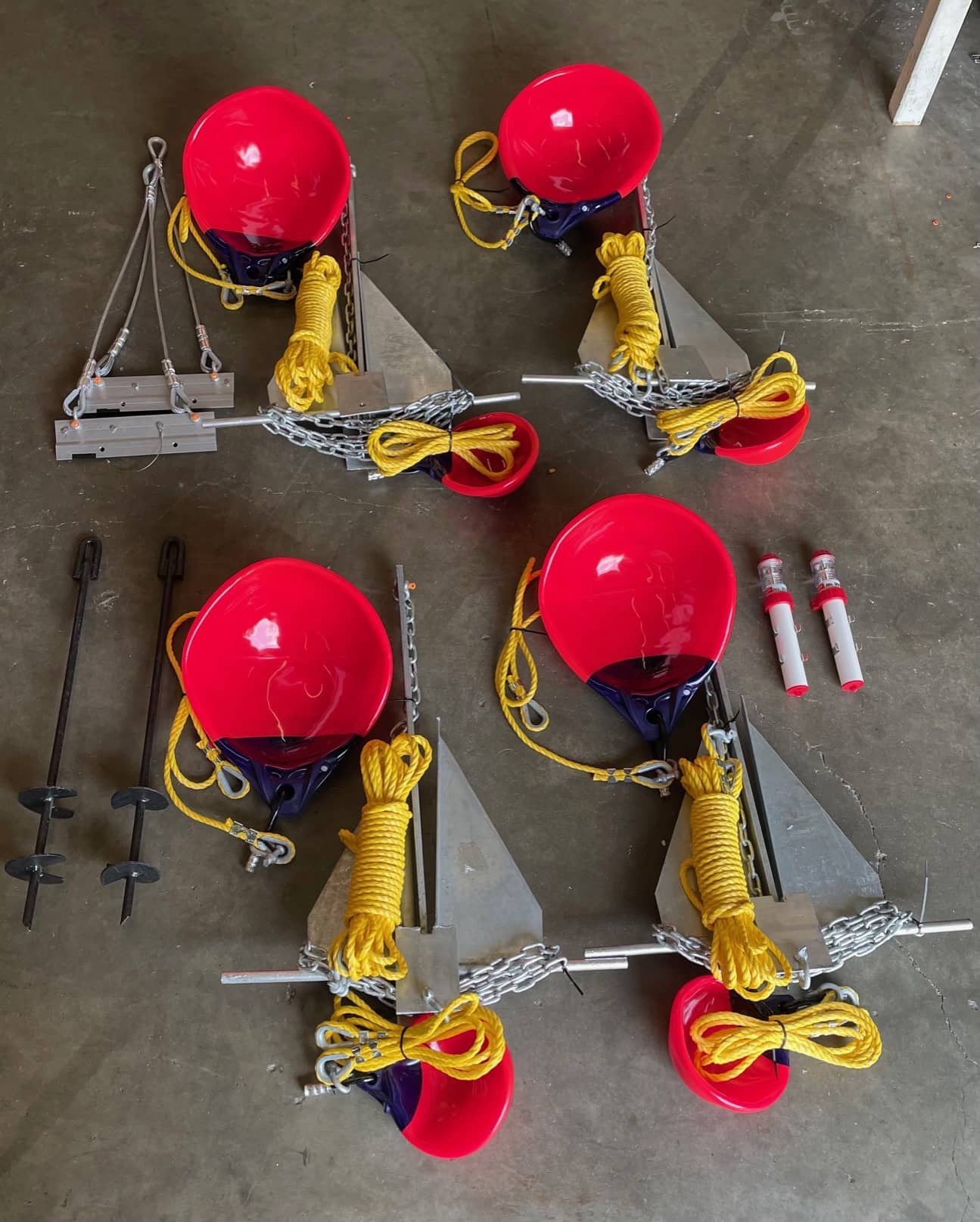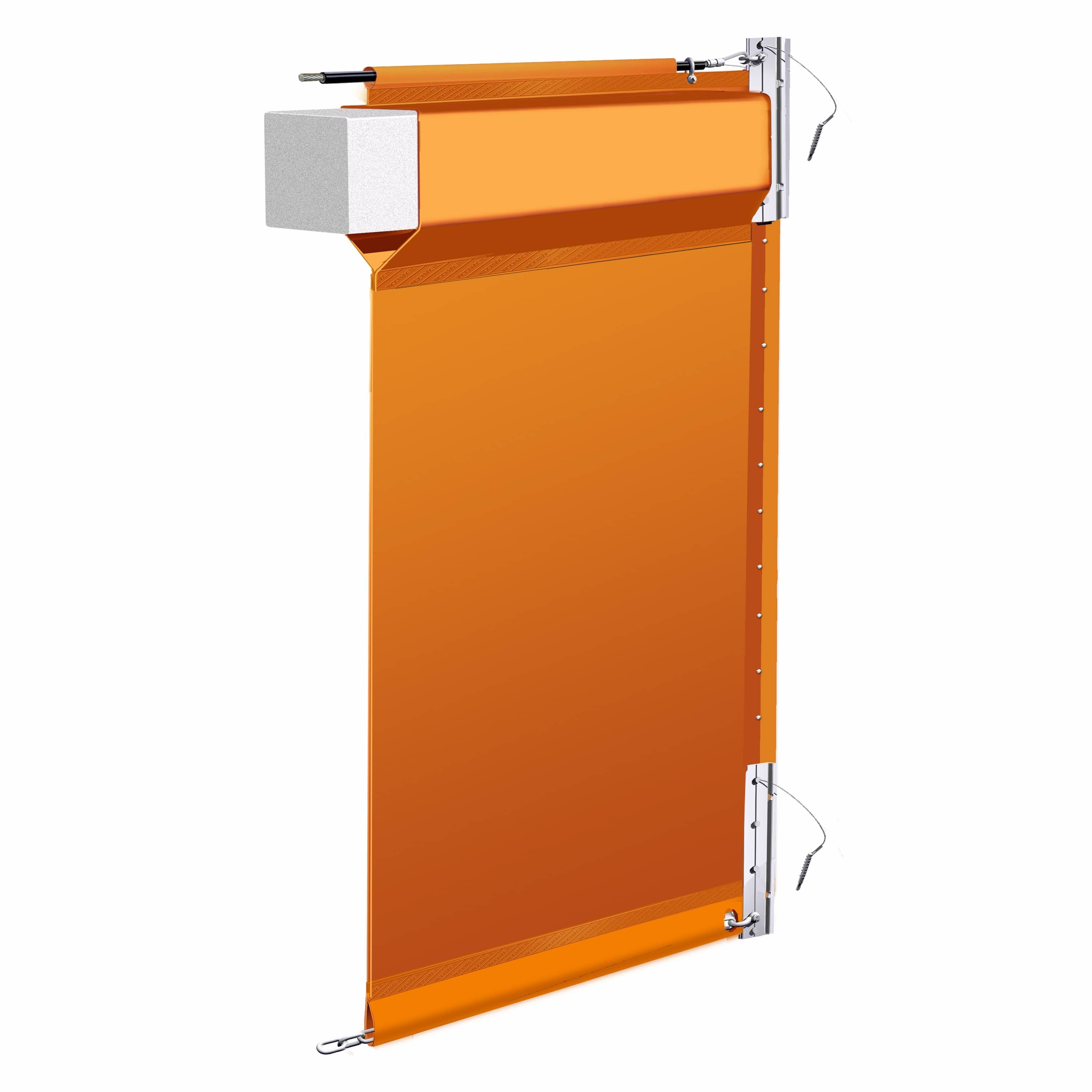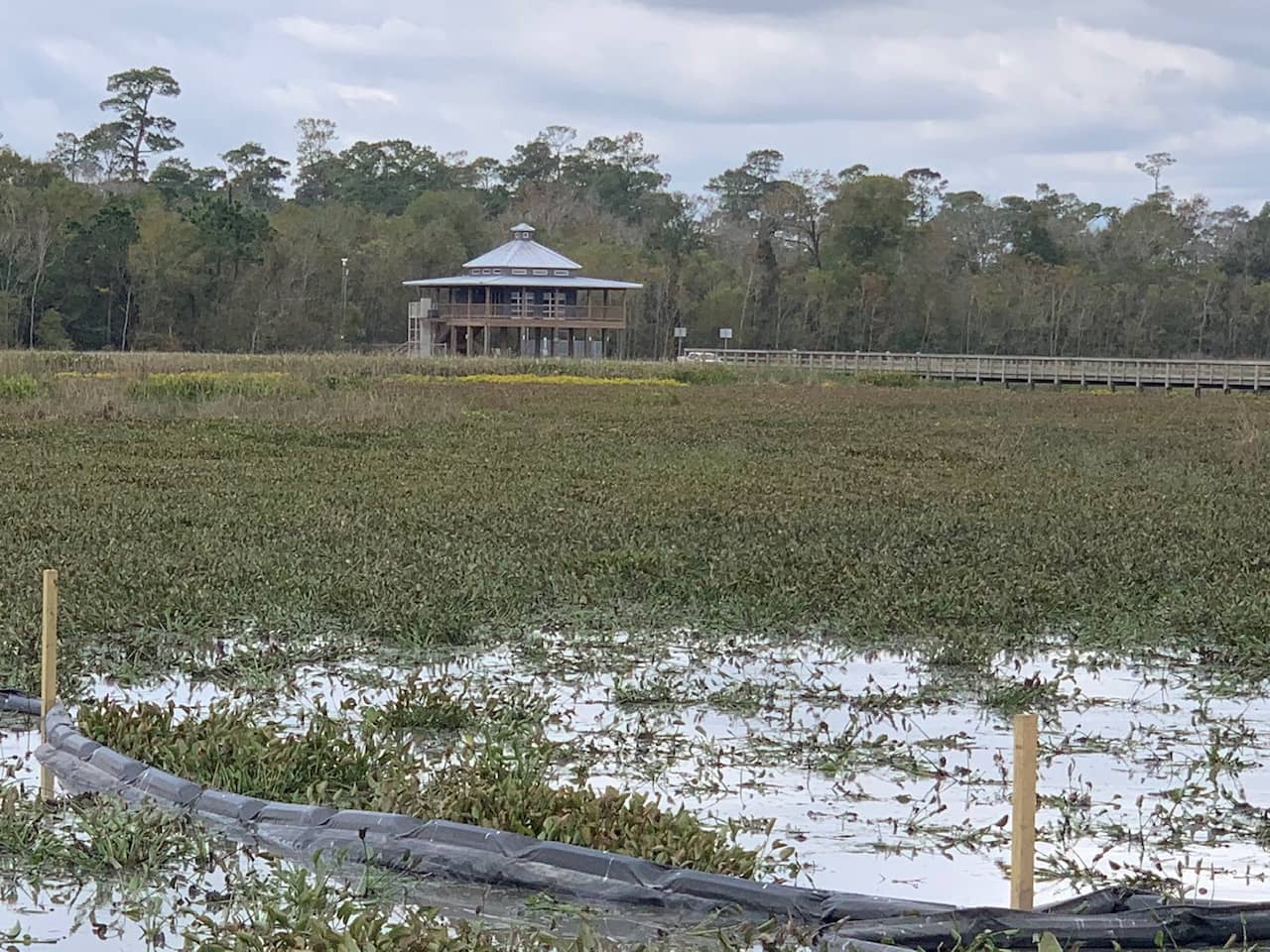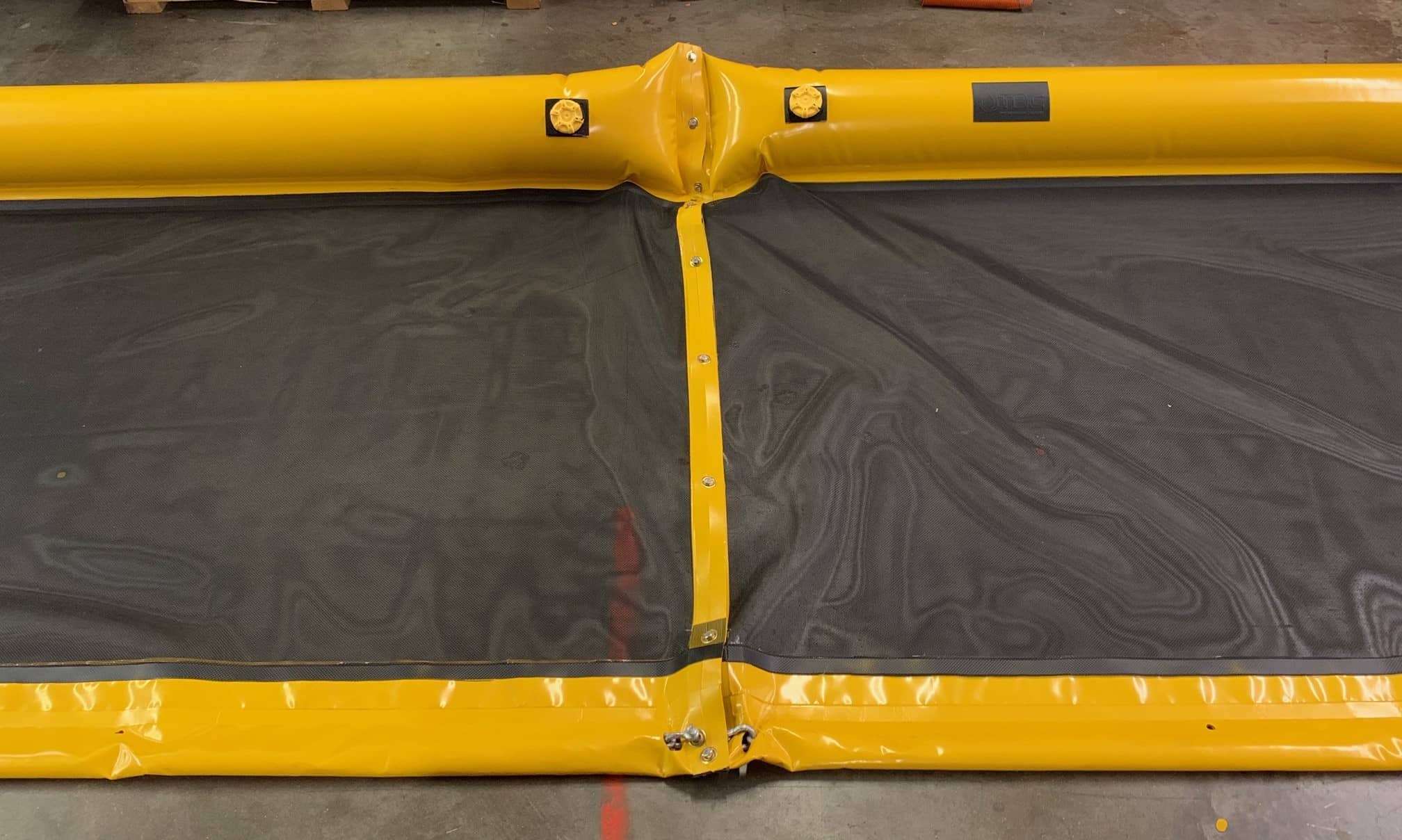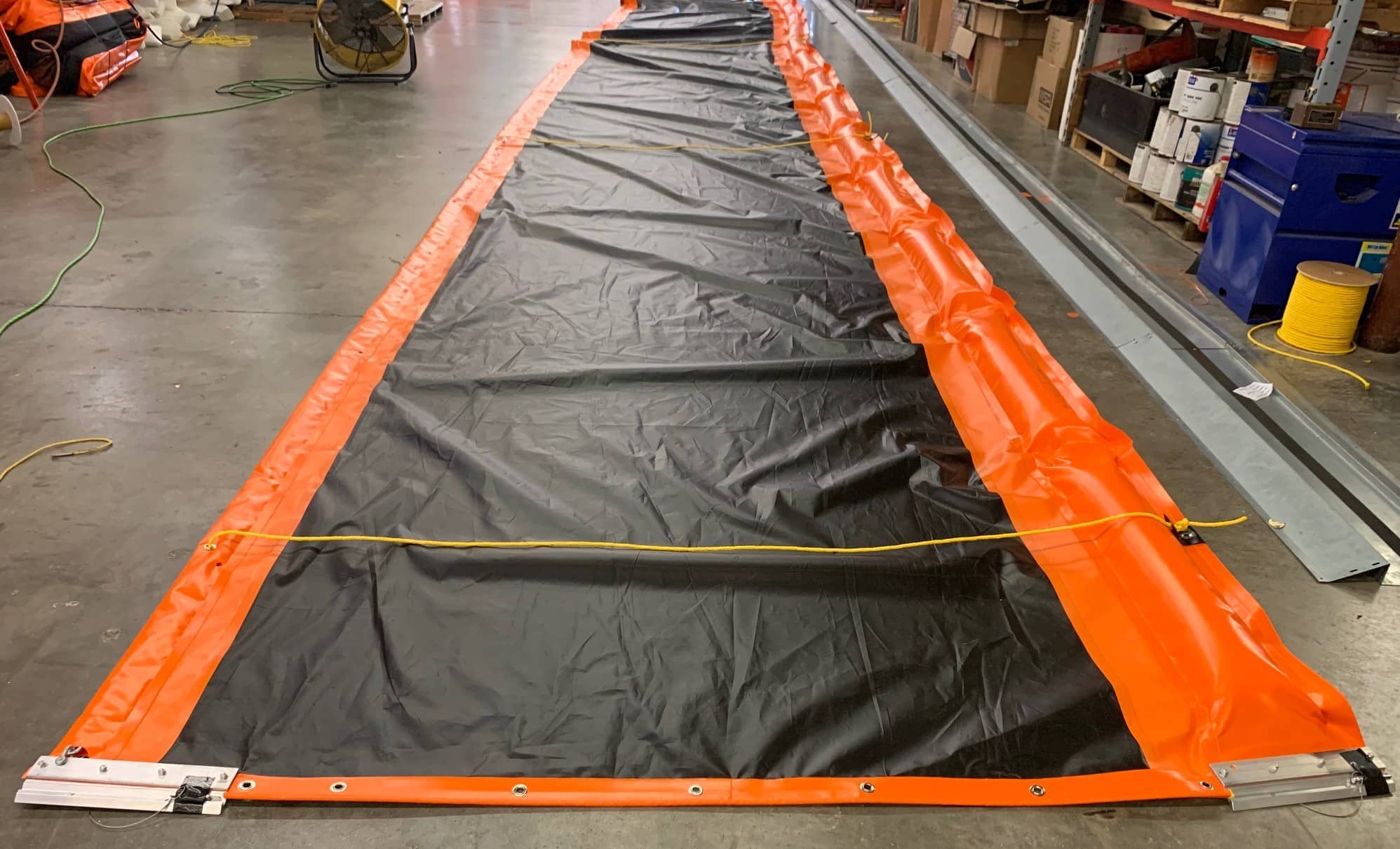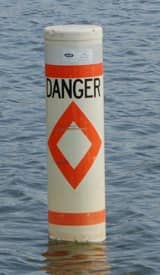Whether you are installing oil spill containment boom or turbidity curtains, these products are only one of the items you will need for a successful deployment. Factors such as wind, tide levels, currents, boat traffic, and safety issues are all considerations when developing your plan. Texas Boom Company offers a wide range of accessories that can make your installation easier, safer, and more effective. Anchors, lines, buoys, lights, beach stakes, and tow bridles can all be important additions to a successful installation.
Installation layouts can result in varied layouts and patterns to best accomplish the intended goal of containing material or silt. These same considerations come into play with traditional oil spill containment boom, sorbent containment boom, inflatable containment boom, shore barrier boom, or permanent type fence boom. Texas Boom Company offers installation instructions and a number of diagrams that show different layouts for containment boom installation or turbidity curtain installation.
Layout:

